See the Better Naito detour and more details at the project page.
Welcome to the week! I’m sure many of you have sore muscles in your face from all the smiling about the sunny weekend we just had. I saw so many people on out two wheels! Let’s start the week with a look at the most noteworthy items we came across in the past seven days…
Here are the ways. Where is the will?: Free bikes, filtered permeability, lower speeds, strict liability — this list from The Guardian on how to boost urban biking is like a cheat code to a happier city.
A mayor that bikes is not enough: Not satisfied with progress on cycling infrastructure, activists in New York City are calling on City Hall to appoint a Bicycle Mayor.
Baller bikes: State Bicycle Co worked with Phoenix Suns superstar Devin Booker to create custom bikes he used as Christmas gifts for his teammates.
Transgender competitor: First-ever transgender UCI World Champion Kate McKinnon has become a lightning rod of scrutiny and now she’s become an outspoken advocate for other transgender cyclists.
Advertisement
Car commercials skewered: YouTuber Damien Slash set his talents on the car commercial genre in this hilariously accurate bit of audio from the BBC.
Burst of self-driving bubble: Americans so want to believe that AVs will solve all our problems, yet even an industry CEO says their capabilities have been oversold. Surprise, surprise!
Lower age, lower price: The City of Vancouver BC has lowered the legal age for using their Mobi bike share system to just 12 years old. They also unveiled a $20 per year price option.
Please subscribe or donate today!
The trouble with the Census: Every year we need to remind you that the U.S. Census bike commuting numbers are not an accurate picture of our nation’s habits. Here’s a solid breakdown that explains why.
Big cars kill: Research from Canada proves what you’ve probably already speculated: That those ever-popular, absurdly large trucks are dangerous by design.
E-scooter laws: The city of Denver is adjusting their laws to clarify how e-scooters can be used. With Portland about to release a final report on our first pilot, we’re looking at how other cities are handling the era of micromobility.
Video of the Week: If you’re a pro cycling fan — especially of a certain age — you’ll appreciate this old footage of the legendary Morgul-Bismarck race.
— Jonathan Maus: (503) 706-8804, @jonathan_maus on Twitter and jonathan@bikeportland.org
Never miss a story. Sign-up for the daily BP Headlines email.
BikePortland needs your support.

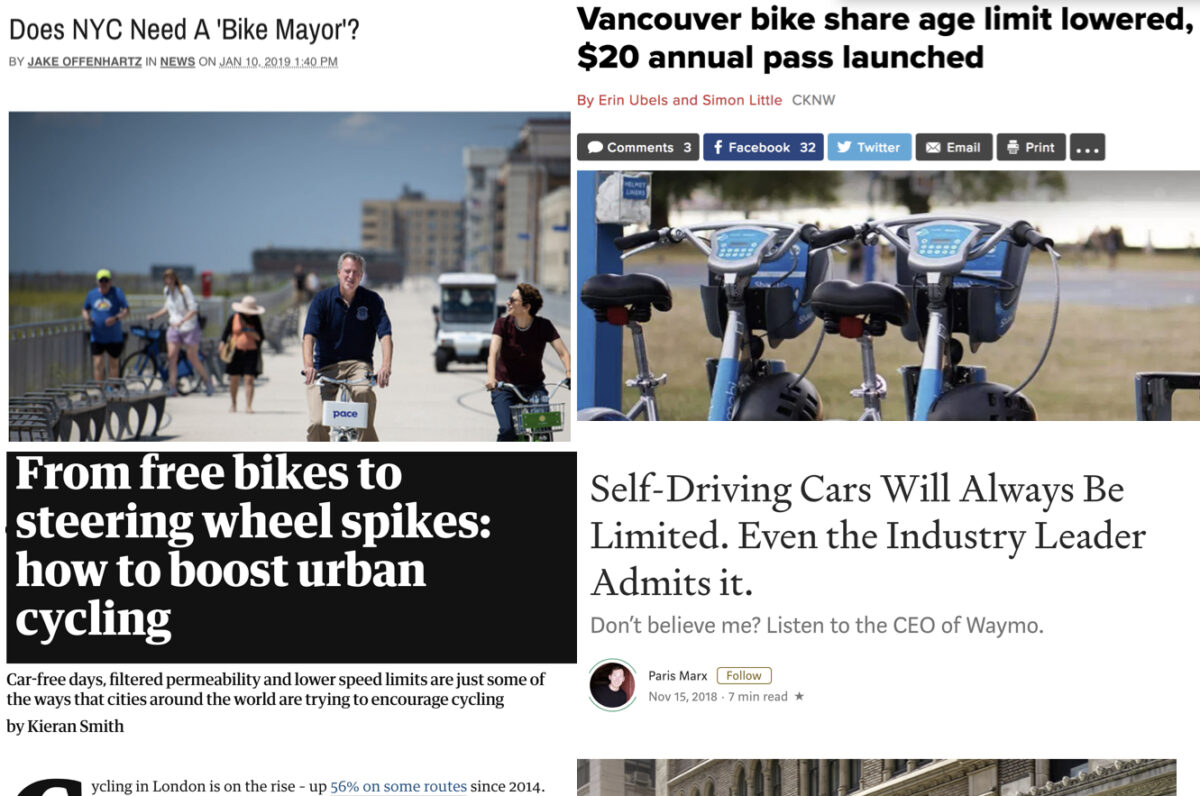
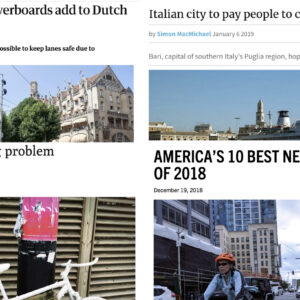
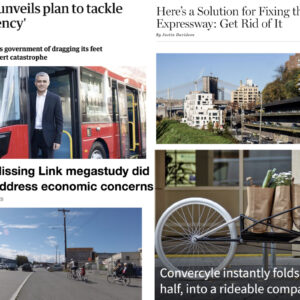
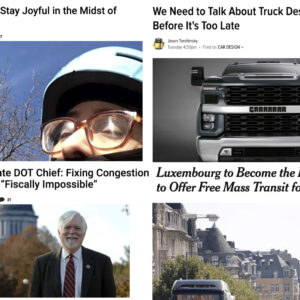
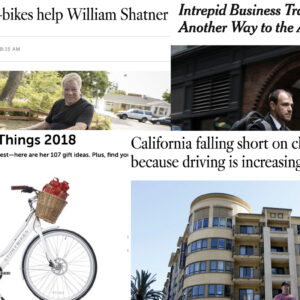
Thanks for reading.
BikePortland has served this community with independent community journalism since 2005. We rely on subscriptions from readers like you to survive. Your financial support is vital in keeping this valuable resource alive and well.
Please subscribe today to strengthen and expand our work.
Fun that the steering wheel spike would come up again. Moral hazard is a thing.
Over the weekend I was pilloried by Sigma right here in the comments for invoking this thought experiment, which I learned from John Adams’ 1994 book. I’ve never heard of Gordon Tullock, but I guess I’ll have to look him up.
From the Guardian piece linked above:
“Studies have shown that injuries to pedestrians increased when seatbelt laws were introduced in Australia in the early 1970s. The argument goes that as drivers’ sense of safety grew, they became more likely to take risks, and subconsciously drove a little faster or a bit more recklessly. While the legislation had made those inside the cars safer, it had shifted the risk on to other road users – particularly cyclists and pedestrians.”
Additionally – anecdotally – it is often difficult to remember how far consumer level motor vehicles have come in terms of [driver / occupant] safety unless one steps back and operates an older car. I borrowed an older US car from the ~late 60s last year from a friend and had forgotten how much more “secure” and protected I had grown to feel in current cars, especially as I slid around on the big bench seat without a seatbelt (only staying in place with the steering wheel) and less direct steering control. Plus add on to this how fast the typical family car can accelerate…
The same conclusion has been drawn about cyclists wearing helmets… endangered by motor vehicle operators. No need to link that here.
Actually doable: Filtered permeability. . .Provisional signs and barriers were covertly erected. . .(the Guardian)
There’s an FP zone in the 4 x 4 block area NE of NE Broadway and 15th. Is there anything to the urban legend that the street barriers were put in place by NIMBY rogues?
This?
https://goo.gl/maps/gPK2JKUtNr92
City history:
15th and 16th were a pair of one-way streets about 40 years ago. traffic going north on 16th tended to keep going north instead of shifting west to continue north on 15th. The diagonal diverter was put there (pre-1990) to stop such behavior, similar to the semi-diverter north of Killingsworth at Williams. The local residents maintain the planting.
It might have been initiated by local concerns, similar to the traffic calming program.
“Dangerous by design” does not mean “a dangerous design”, it means designed with the intent of being dangerous.
Absurdly large trucks are a dangerous design.
An interesting distinction. But I think it is more nuanced than that.
The design of many larger vehicles is clearly organized around the goal of presenting a menacing, intimidating front. Cars on the other hand are and have long (at least since Ralph Nader) been required to be designed around minimizing the well known probability of soft human flesh encountering the fronts of these vehicles resulting in injuries.
Given this bifurcated history, I don’t think it is a stretch to point out that menacing, jacked up trucks are dangerous by design.
The intent may not be to maim, but the semiotics that celebrates intimidation undeniably delivers that effect. Claiming innocence here doesn’t hold much water.
I don’t deny it delivers that effect. Nor do I claim designers are “innocent” (they are surely aware their designs are more dangerous). Why not just say “giant trucks are dangerous”? or “lifted trucks are a dangerous design”?
I could go along with that, but I think these are some pretty fine hairs.
The design of these trucks not only delivers dangerous outcomes, the elements that would reduce those dangers are/were well known, and willfully skipped over for other priorities.
Is this meaningfully different than dangerous by design?
I’m reminded of our longstanding disagreement over whether making driving more difficult should be a social objective….
The reason why I think it is important is that in this forum (like forums everywhere) we have a tendency to demonize people outside our community. It’s bad enough that someone is designing a dangerous product, but it’s pure evil to design something that is intended to be dangerous. How can you reason with people like that?
How we think about and treat other people is important, to me at least.
OK, so where does responsibility lie?
If we agree that the designs are not only dangerous but have statistical consequences for human life, who is responsible?
Clearly with the designer/manufacturer of dangerous vehicles, customers for buying them, and regulators for permitting them to be sold/driven in the first place.
Blaming everyone is not a way to assign responsibility for an identified problem with a product. Such a shotgun approach is itself an abdication of responsibility.
Are you suggesting product recalls should start holding consumers responsible as well?
My complaint was suggesting intent where it is unlikely to be found.
To answer your question, not all ills in the world can be ascribed to a single person. If you want to discuss this side topic further, why not start a new thread?
https://smartgrowthamerica.org/program/national-complete-streets-coalition/dangerous-by-design/
“No longer does anyone credibly claim that self-driving cars are the future of transportation, and Uber has even shifted its focus to scooters, e-bikes…”
Interesting.
Not so long ago those of us suggesting this here in bikeportland comments were pilloried.
The blog post on autonomous vehicles misquoted:
I agree with Krafcik that human beings fail abysmally when it comes to “level 5 driving”.
https://www.cnet.com/news/alphabet-google-waymo-ceo-john-krafcik-autonomous-cars-wont-ever-be-able-to-drive-in-all-conditions/
Not long ago I found myself at a utility industry dinner next to a guy who was an expert at implementing A.I. in running treatment plants etc., and another who was an expert on SCADA ( Supervisory control and data acquisition) in the utility industry. We had a great time pillorying the delusional and inexperienced people who think self driving cars are coming soon. The technical hurdles for this are enormous. It is with out a doubt a pipedream created by what the futurist John Michael Greer terms the “religion of progress”. I would be willing to bet that we do not see true level 5 autonomous vehicles in widespread use before happy motoring dies a well deserved death from resource shortages, complication overshoot, and bad economics.
The world champion track racer’s name is Rachel, not Kate
Its nice to see that Bicycle Mayor concept gaining interest in NYC! My guest post focused on the youth angle, but overall, its an option to add to the number of voices in the conversation: https://bikeportland.org/2018/08/21/guest-post-does-the-portland-region-need-a-bicycle-mayor-287743
Hello, Kitty:
“Absurdly large trucks are a dangerous design.”
The sort of front bars you see on some big “pick-up” trucks are a throw-back to kangaroo bars meant to keep marsupials from denting the metalwork or clogging the grill. In other words they are there to protect the metal machine from crashes with things made of meat. If this is a necessary feature, then crashes are expected.
It’s intentional. Dangerous BY design.
Those bars are dangerous by design, and should be illegal. Along with lift kits and most aftermarket headlights.
If the bars actually are dangerous (and I suspect they are), I would support all of these ideas.
The blurb on the ACS didn’t actually ay much about the census being an inaccurate way to measure bike use. It points out that it only measures commuting, which is a reliable metric across the nation. Do I care if people who telecommute aren’t counted as cyclists? They’re still counted and show up as an independent percentage of workers, so the data is supplied to correct the bicycle fraction from a percentage of workers to a percentage of workers who travel to work.
I agree that there is some jumping of the numbers from year to year, and the error presented in the data itself makes that known. It is much more helpful to look at trends over time, which dramatically shrinks those error bars of the individual years. When I look at Eugene’s data from 2012-7, it feels like I’m looking at cell biology data rather than social data because the best fit line fits so tightly to the data. (It’s depressing as can be to see it predict zero bikes in 2024, but I can’t say it doesn’t accurately reflect the facts on the ground.) Does anyone in PDX really think there’s been some dramatic surge in bike use over the past decade that has been missed? I certainly don’t see it when I’m there.
In response to dismal ACS numbers, I am seeing some locales putting bike counters on their bike paths. Oh my. I’m seeing people driving to the bike paths to ride because they don’t feel comfortable riding there, and that causes increased bike counts. How is that an improvement on counting the way people get to work?
I’ll end by saying that there is a single valid criticism of the ACS, but it wasn’t made in that article. For reasons I don’t understand, in recent years there has been a slight decrease in the percentage of households who have responded to the survey, from about 97% to about 93%. While this could skew the data, it sure seems more likely to me that the non-respondents are the faux-libertarians who drive everywhere but like to deny that government services are essential than that they are people who ride their bikes to work.
Both of Portland’s bike counters (Hawthorne and Tilikum) are broken.
A metaphor for sure.
When I listen to what Krafcik actually said in the D.Live interview, as opposed to reading Paris Marx’s cherry picking as he writes ‘critically on tech’, I come away with a very different take on the state of self driving cars.
In the interview, Krafcik’s ‘level five’ example is a self driving car traveling from Los Angeles to Santiago, Chile incident free in any weather condition. Krafcik humbly admits that, as a driver, he doesn’t have ‘level five’ capabilities. And I think we can all agree that no human has reliable level five capabilities to begin with.
If any road, any condition, anytime is the bar, then fine, let’s focus on ‘dockless bikes and scooters’ in the first world urban center. But if we are genuinely interested in reducing the death and injury present in today’s global mobility system, which, as Krafcik points out is equivalent to a 737 crashing every hour, then let’s work to accelerate the adoption of self driving and driver assistance technology on the road.
While Marx devoted a single paragraph to the Krafcik interview, for four paragraphs he rehashed the Uber fatality in Phoenix last spring, and continued to miss the salient point of that tragedy. The fact is, in that single case of driverless technological contributing to a fatality, Uber replaced Volvo’s driver assistance system, which is an option on the XC90, with their own experimental prototype and an inattentive driver. Had the vehicle been using Volvo’s technology available at the time, the system would have worked and the death would likely have been avoided.
It is Luddite pieces like this that perpetuate the status quo by fantasizing about a ‘future people want’ and mischaracterizing the state of improvements that can immediately be introduced into the present that is. While level five self driving technology may never be realized, there is abundance of related tech that should be understood, applauded and embraced today.